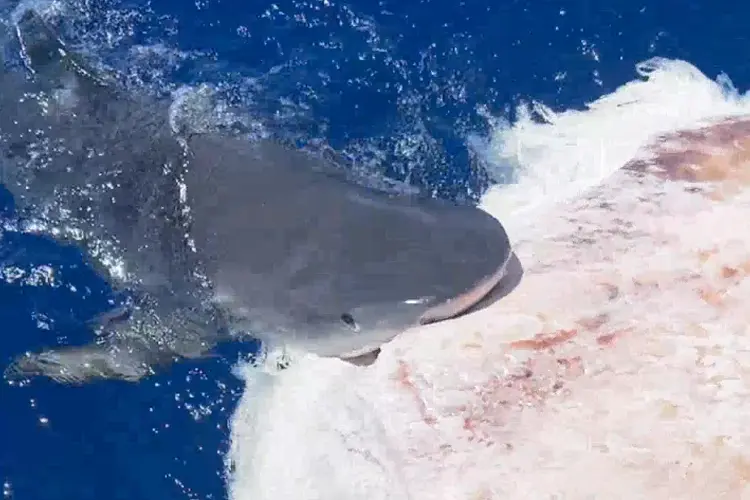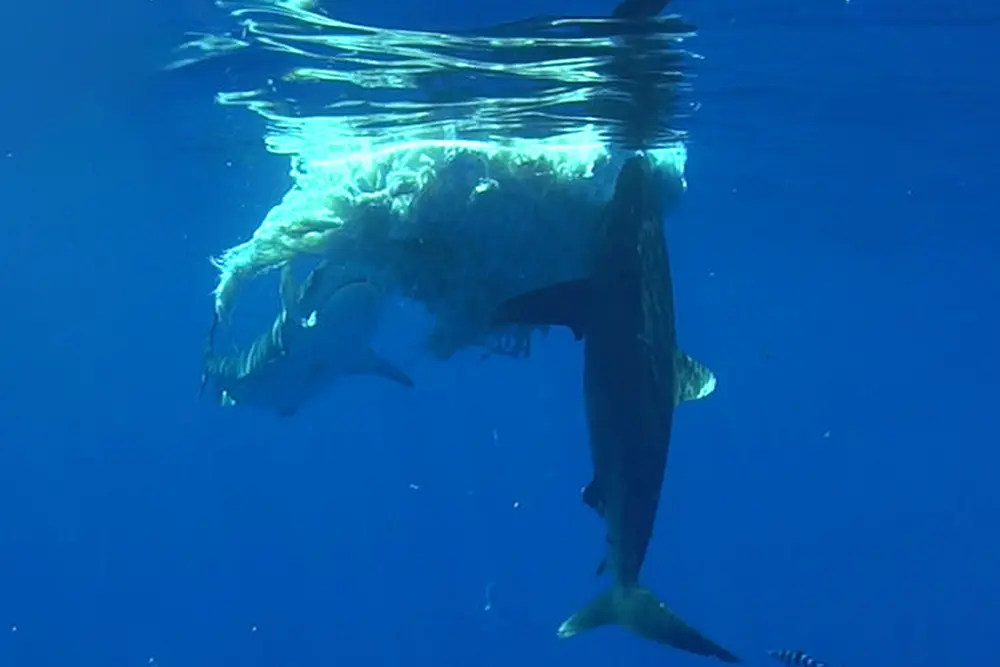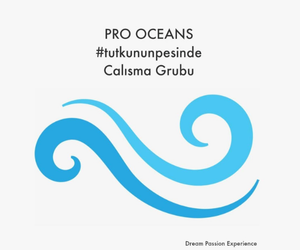A new paper published in Frontiers in Fish Science has captured striking footage of an unlikely dinner pairing, as oceanic whitetip and tiger sharks were spotted feeding together on an animal carcass off the island of Hawai’i.
The footage is thought to be the first documented evidence of the two species feeding together, as they by and large occupy different marine habitats.
Although oceanic whitetip sharks (Carcharhinus longimanus) are often spotted close to reefs, they are – as the name suggests – a pelagic, deep-water shark, and spend most of their lives in the open ocean.
In an almost direct reversal of behaviours, the larger tiger sharks (Galeocerdo cuvier) are near-shore coastal roamers, although they are also known to migrate long distances through the oceans.
During the spring and summer months, a seasonal aggregation of oceanic whitetips near Hawai’i brings them into close proximity with the island’s resident tiger sharks, however, the two species are rarely seen together.
‘To our knowledge, this is the first study to document a feeding aggregation of tiger sharks and oceanic whitetip sharks scavenging concurrently, and peacefully, on a carcass,’ said the study’s lead author, Dr Molly Scott, a marine researcher at the University of Hawaiʻi at Mānoa.
‘It is incredibly rare for these two species to overlap in space and time.’
The encounter was filmed by tourists in April 2024, as the sharks were spotted feeding on a carcass in an advanced state of decay about 10km off the western coast of Hawai’i.
At least nine oceanic whitetips and five tiger sharks were seen during a period of 8.5 hours, but there was no aggressive behaviour between the species.
Tiger sharks, which average between 3.5m – 4.5m as adults, are substantially larger than oceanic whitetips, which are more likely to be encountered as adults between 2-3m in length.
As a result of the size difference, the study’s authors note that the tiger sharks were the dominant party at the feast, and with the exception of one smaller female, were spotted feeding directly from the carcass most frequently.
Two larger oceanic whitetips were also seen taking chunks out of the remains, but the smaller sharks kept their distance and fed on scraps dropped by the bigger fish.

Although there was clearly a pecking order over the course of the feeding, there did not appear to be any attempt by the larger sharks to drive others away from the carcass, almost as if the sharks implicitly understood who got first servings.
‘Even though up to 12 individual sharks were feeding intermittently from a very small, highly degraded carcass, we did not observe any agonistic inter- or intra-species aggression,’ said Scott
‘This was surprising to me; I would assume some agonistic behaviours would exist when there are that many sharks attempting to feed around such a small carcass. But it seems all individuals knew their place in the social hierarchy.’
Although the encounter lasted less than a single day, the study’s authors say that it provides an insight into the relationship and social interactions between species of shark that do not normally cross paths.
Scott also noted that even though the sharks were involved in feeding behaviour, they took little notice of the humans in the water filming them.
‘There were between two and three humans in the water at all times, filming more than 12 sharks feeding. None of the photographers reported any scary, aggressive, or harmful interactions with the sharks,’ said Scott.
‘I hope this provides a new perspective that sharks are not the human-eating predators they are made out to be.’
The complete paper, ‘Novel observations of an oceanic whitetip (Carcharhinus longimanus) and tiger shark (Galeocerdo cuvier) scavenging event’ by Molly Scott et al is published under an open access licence in Frontiers in Fish Science.
The post Unlikely oceanic white tip and tiger shark dinner pairing appeared first on DIVE Magazine.





